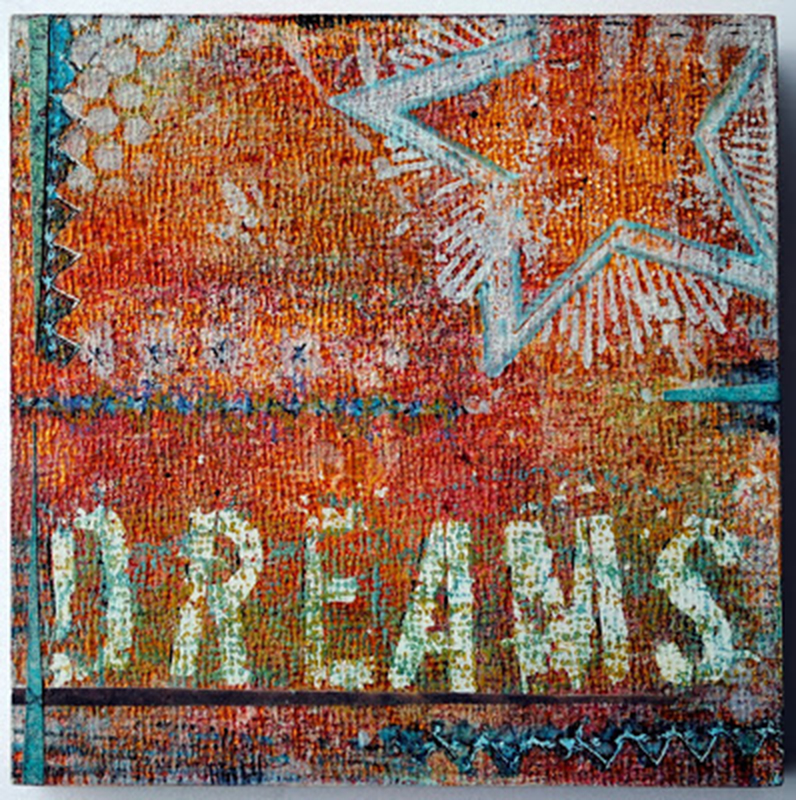Seven Steps for Developing
Your Signature Artistic Style
By Seth Apter
[dropcap]W[/dropcap]e all know artists that have a signature style. When we see their work, we can immediately identify it as theirs and theirs alone. This is true for the great Masters, many well-known contemporary artists, and a host of people in our mixed media community as well. But this is not the case for everyone.
I’ve heard many artists say that they’ve had difficulty finding their own distinctive style or identifying a label that accurately describes the work they create. More and more people simply don’t want to imitate the look of others. They’re no longer satisfied with making cookie-cutter projects or are tired of struggling to identify their niche as artists. They want their own voice.
If these scenarios sound familiar, take a moment to recognize that this is a good problem to have. It means you are stepping out of the shadows and into your own light. It means that you have enough confidence in your abilities to begin to rely on your talent and instincts. Rather than approach the issue with frustration, think of it as an exciting, creative opportunity.
Many times an artist’s style emerges organically over time. As such, sometimes the best way to find your voice is to simply create. And create again. And then create even more, Play. Experiment. Do the work. Regardless of the media you are working in, you might observe certain characteristics that are common in much of what you create. These might be color, texture, subject, composition, or a variety of other elements. Use them as clues to recognize your artistic voice.
However, developing your own signature style can be challenging, even for artists who have been working for years. It just doesn’t seem to happen. But don’t give up. The following seven suggestions may help.
1. Play
Give yourself permission to play, without any preconceived plan. Clear the area, spread out the supplies and just go for it. Grab whatever catches your eye. Mike materials that you usually don’t combine. Choose a supply that you’ve never opened. Work with no sense of where you are going. When recess is over, see what you’ve created. Ask yourself, where did I end up? Sometimes our voices are clearest when we just let ourselves go.
2. Step Out
Choose a favorite mixed-media art how-to book or head to an online site with tutorials. Pick a project or technique that appeals to you. Instead of following step-by-step, challenge yourself to change it up. Add a new step. Bring in a new material to technique. Do this a few times over the course of several months. In the end, identify your influences and see what you’ve brought to the table. It may be a key to your personal style.
3. Play Favorites
We all have artwork that we’ve made that has special meaning — the pieces that we really love. The ones we pick to show other people. Gather and study them. What is it about those particular pieces that resonates with you? Make a list of the characteristic that you love. See if a theme emerges across all your favorite work.
4. Obsess Less
As artists, we often hoard special objects or supplies, but can’ t seem to use them in our work. Grab a bunch of these items and look at them as a group. Chose and use several of these treasured items to make a number of different creations. Because these materials speak to you so loudly, these new pieces of art just might provide a hint to your artistic voice.
5. Keep a Style File
We’ve all had the experience of seeing something that really grabs us. Keep a file of images that call your name. Don’t limit yourself to artwork. Clip a magazine ad that has just the right color or cool font. Don’t use these images in your art. Instead, as your file grows, try to see what themes are repeated. People are often attracted to styles that are very different from theirs, and for some this may be a clue to discovering your own voice.
6. Journal It
A visual journal is the perfect spot to find your style. Write down artful thoughts, words, and events. Doodle, draw, or paint anything that inspires you. Keep track of the results of these exercises in your journal. Do this without any concern about how good it is, and create with the idea that it’s for your eyes only. As you journal fills up, look for any recurring patterns among the entries.
7. Four Score
Choose four pieces of your art that you have made that either best represent you or are simply your personal favorites. Show all four pieces to four different people whose judgment you trust. Ask each person to write down four words that in their minds best describe your work. See what themes are repeated. Often we already have our own style but find it hard to see. It may actually be very clear to others.
Go about the search for your voice with hope, excitement, and enthusiasm. Keep on creating and try some or all of these exercises. You might just find your voice, echoing loud and clear.
Visit Seth Apter’s blog.
Vist Seth Apter’s website.



